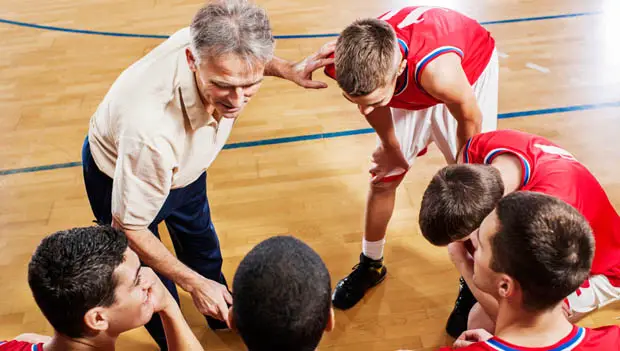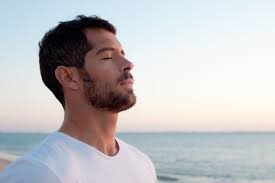Table of Contents
*This post may contain affiliate links. As an Amazon Associate we earn from qualifying purchases.

“Visualization is everything.
if you can imagine something,
you can do it.
Nothing happens in reality until
it happens in your mind first.”
–Jim Carrey
Why Imagery?
Researchers are finding that not only the words you tell yourself affect your physiology but so do your mental images. If you picture the worst case scenario, then chances are you are ramping up your stress chemicals. This is not good imagery!
I often teach athletes to use imagery to manage performance anxiety and to see what they want to have happen rather than what they fear will happen. But I also encourage them to add some breathing techniques with their imagery because deep breathing stimulates the brain to reduce stress and allow more ease in the mind and body.
Use Both Imagery and Breathing Tools
 Breathing is something we all do but many times it happens with little or no awareness. Breathing and tension are related so it is important to use both deep breathing and imagery together to help decrease tension or stress as needed. Athletes and others often hold their breath or have shallow breathing when they are uptight. I often encourage athletes to work on deep belly breathing or heart breathing to ease tension in their body.
Breathing is something we all do but many times it happens with little or no awareness. Breathing and tension are related so it is important to use both deep breathing and imagery together to help decrease tension or stress as needed. Athletes and others often hold their breath or have shallow breathing when they are uptight. I often encourage athletes to work on deep belly breathing or heart breathing to ease tension in their body.
The tool of heart breathing is described by Doc Childre and others in the book, Transforming Stress.
The idea is to learn to drop your breath and breathe deeper, from your chest area and to assist yourself to use this method to calm yourself as your breathing and heart rate are connected. I like it because it combines breathing and a using a heart image together.
Using breath and imagery can help athletes be more present focused and reduce worry thoughts. I also like these tools because they help athletes have an action focus they can control. So how would athletes link breath work with imagery?
Example: Tennis Serve Using Visualization and Breath Work
 Imagine yourself at the baseline. See yourself bounce the ball and your opponent on the other side of the net. Bounce the ball and take a breath. Imagine breathing in from your heart area as you do this. Bounce the ball and take another breath. Now see where you want to place the ball. Take a breath. Serve.
Imagine yourself at the baseline. See yourself bounce the ball and your opponent on the other side of the net. Bounce the ball and take a breath. Imagine breathing in from your heart area as you do this. Bounce the ball and take another breath. Now see where you want to place the ball. Take a breath. Serve.
This happens quickly but give your mind a present focus. Use these steps to replace negative images with images of what you WANT to occur:
- Practice these ideas prior to using them on the court.
- Then use them in practice sessions and work on the rhythm.
- Finally, when ready, add them to your game.
This visualization can be altered to your sport by picking a specific part of your performance that you want to improve and use imagery and breath work.
Abstract Images Work Too!
 In the above example, the idea of images on the tennis court was encouraged. But imagery can also include visuals or pictures of things that give you an instant idea of what you are seeking. In a recent blog post by Kate Hays, Ph.D. entitled “The Imagery Edge–Part II” in Psychology Today (posted December 13, 2015), she gave examples of athletes describing having tension and the image he gave was it felt a sense of heaviness, like a sack of potatoes. He went on to say he would rather feel cool as a cucumber. This is a fantastic example of images sometimes better describing a sensation or feeling than words. And, we can also imagine an image faster than we can come up with a string of words.
In the above example, the idea of images on the tennis court was encouraged. But imagery can also include visuals or pictures of things that give you an instant idea of what you are seeking. In a recent blog post by Kate Hays, Ph.D. entitled “The Imagery Edge–Part II” in Psychology Today (posted December 13, 2015), she gave examples of athletes describing having tension and the image he gave was it felt a sense of heaviness, like a sack of potatoes. He went on to say he would rather feel cool as a cucumber. This is a fantastic example of images sometimes better describing a sensation or feeling than words. And, we can also imagine an image faster than we can come up with a string of words.
I once worked with an athlete who described his tension like eyes. When I asked him to describe what he meant he said it felt like every person was watching him (golf course) and all eyes were on him. He found the image a huge distraction so we worked on coming up with a replacement image for him rather than just breath and focusing on where he wanted the ball to go. He came up with a great snowboarding example. He wanted the feeling of being in the air, kind of like letting go and being more carefree. This image said all he needed to say to himself and helped him replace the “all eyes are on me” feeling.
You can easily practice this route of imagery as well.
First, images are very personal so take some time to ponder what images might give you a visual of what you want, or a feeling of what you want. I know water and beaches of many different meanings for people with some finding beach images to be soothing while others would not have that same response.
Second, decide how the image can help you and give it meaning. Make it vivid as well as meaningful.
Third, bring it to your sport. Use it in practice prior to competitions. This way you are more ready to use it when you need it most.

